Since the beginning of this year, we have dedicated this column to the top 10 smartphones for selfies in the market. We know that not many game-changing smartphones hit the market monthly thus we release this column bi-monthly. Even at that, within two months, there are still not many devices with a cool selfie camera performance that will change the face of the top 10 selfie smartphone list. However, some months are different just like July and August. Over the past three columns, we have had some constant devices like Huawei Mate 40 Pro, Huawei P40 Pro, Google Pixel 5, iPhone 12 Pro, Vivo X60 Pro, and so on. However, with the release of the Huawei P50 series, iQOO 8 series, and Honor Magic3 series all in August 2021, we have a significant change to the list this month.
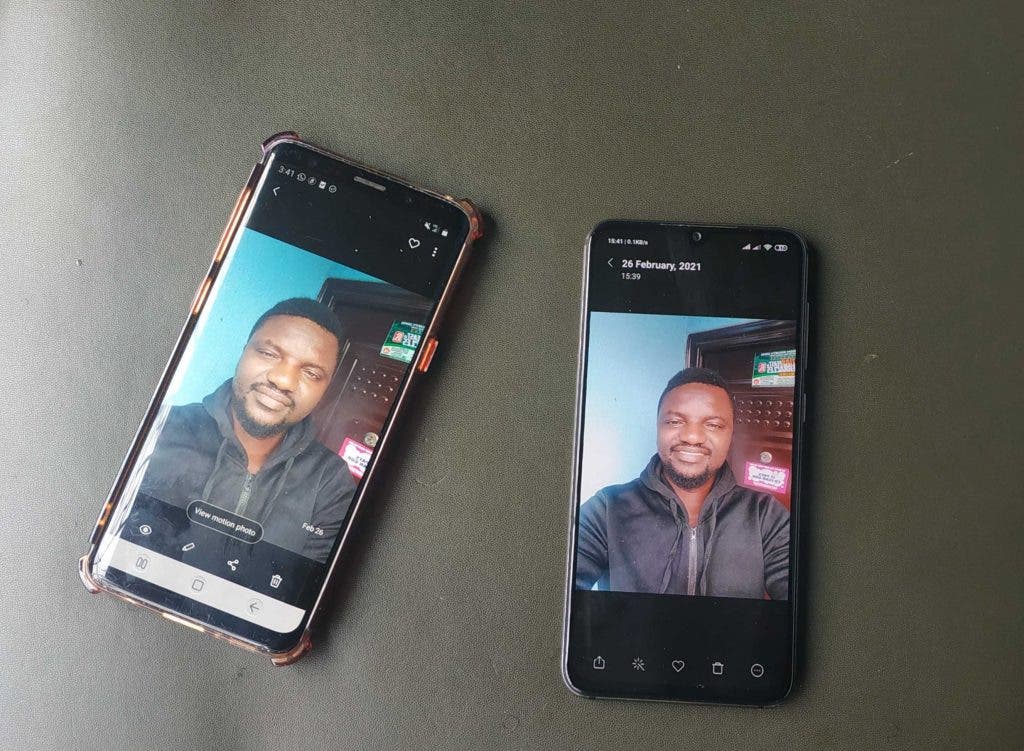
This is a pretty long piece and we did not just look at the selfie quality of this device, we also gave a summary of the specification of each device. So, you may want to relax and grab a pop-corn for this interesting read. If your “best” selfie smartphone is not in this edition, you may check our February 2021 edition, April 2021 edition, and June 2021 edition for more top smartphones for selfies. I’m sure your best will make it to the list in at least one of these editions. If you cant find a pretty good selfie device on this top 10 list, let us know in the comment section. We will sure consider it in our next column in October. Of course, this is not an assurance that the device will make the list.
How do you choose your smartphone? Is the selfie camera one of the major consideration? If yes, then this list will certainly impress you. Unfortunately, some latest flagship smartphones like the Xiaomi Mi MIX 4 and Samsung Galaxy Z Fold3 can not make this list for obvious reasons. These smartphones come with an under-display camera. The imaging capabilities of the under-display camera are quite poor for now. Lovers of full-screen devices will love these smartphones and not selfie lovers.
If you have been reading our previous smartphones for selfies column, then you must know that a high pixel does not always mean better image output. In fact, the likes of Huawei, Samsung, Google, and Apple hardly ever use above 20MP on their front camera. However, these companies have arguably the best front cameras in the industry. Of course, in addition to pixel size, there are other details that selfie lovers should consider. We look at other front camera capabilities like software optimization, beautification features, AI features, portrait mode, and more.
Top 10 smartphones for selfies – Disclaimer (emphasis)
The devices in the list are, in our opinion, great smartphones for selfies. Since we don’t get to see great smartphones for selfies regularly, some devices from our previous column may make an appearance on this column. If you are a selfie freak or you buy your smartphones for their selfie ability, then check out our list with good recommendations.
1. Huawei P50 Pro
About a week ago, Chinese manufacturing giant, Huawei officially released the Huawei P50 series. The Pro model of this series, the Huawei P50 Pro, almost instantly climbed to the top of the selfie ranking on DxOMark. In fact, its rear camera is also the best smartphone camera on DxOMark ranking. We didn’t have to struggle with the decision to include this device as one of the top smartphones for selfies.
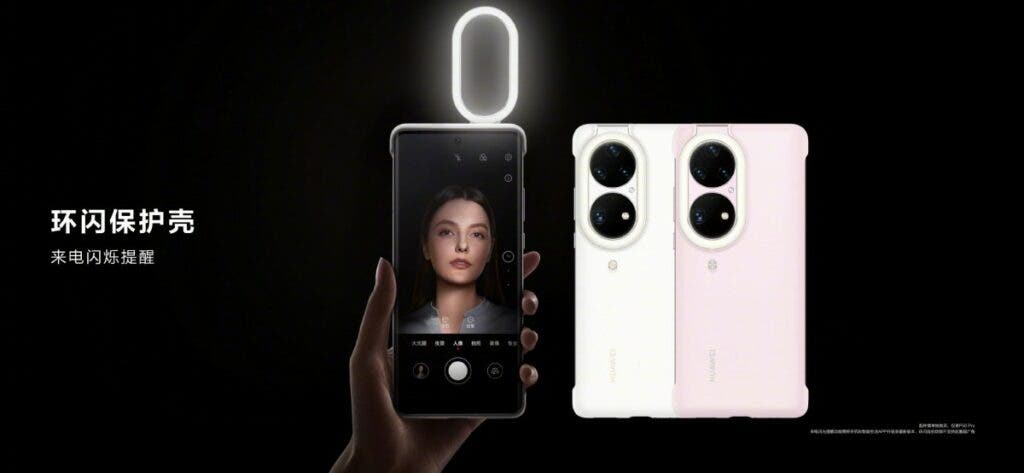
The Huawei P50 Pro front camera specification is not very different from last year’s Mate 40 Pro. This device comes with a 13 MP Sony IMX688 sensor (f/2.4-aperture lens with an 18 mm-equivalent focal length). Although this sensor is just 13MP, it performs better than many 32MP front cameras in the market. The front camera optimizations from Huawei are also another beautiful aspect of this device.
Unlike the Huawei Mate 40 Pro, the Huawei P50 Pro front camera comes with phase-detection autofocus (PDAF) system. This makes this smartphone the first Huawei device to come with this technology. The Chinese manufacturer also uses Artificial Intelligence (AI) to optimize the image quality of the front camera.
For better videos, the Huawei P50 Pro comes with staggered HDR processing and improved EIS (electronic image stabilization). While the HDR improves the image quality in low-light conditions and the wider lenses stabilize the image effect, the EIS helps with cropping and blurred images.
Generally, the Huawei P50 Pro front camera has very good exposure in both photos and videos. It also comes with a wide dynamic range while the white balance is quite accurate. Nevertheless, in low-light environments, the details are not as good and some noise may appear. Occasionally, users may experience autofocus and inaccurate skin tone issues. The dynamic range also significantly reduces in low-light videos.
Key front camera specifications:
- 13 MP 1/2.8″ sensor with 1.22µm pixel size
- 18 mm-equivalent lens with f/2.4 aperture
- PDAF, EIS
- 4K video, 2160p/60 fps, (2160p/30 fps tested)
Huawei P50 Pro succinct specifications
This smartphone comes with a 6.6-inch OLED display that supports a resolution of 1228 x 2700 pixels (~450 PPI density). Under the hood, we have a Kirin 9000 5nm chip that supports 5G. However, it is important to note that the Huawei P50 Pro can only use this device with 4G network. In addition to the Kirin 9000, some models of this device use the Snapdragon 888 4G SoC. This chip is also a 5nm processor that supports only 4G. This means that the Huawei P50 Pro does not support 5G connectivity.
In addition to the processors, this flagship smartphone also has up to 12GB of RAM and 128GB/256GB/512GB of internal storage. On the rear, it uses a quad camera setup. It has a 50MP main camera, a 13MP (ultrawide), 64MP periscope telephoto, and a 40MP black and white sensor. To keep its lights on, this device uses a 4360 mAh battery that supports 66W fast charging, and 50W wireless fast charging. This flagship smartphone is the first device to come with HarmonyOS 2 out-of-the-box. Of course, it does not support Google Mobile Services.
2. Oppo Reno6 Pro 5G
This smartphone uses the same front camera as its predecessor, Oppo Reno5 Pro which was once in the top 10 smartphones for selfies list. Thus, it is not a surprise that the Reno6 Pro is making the list. However, unlike the Reno5 Pro, the Reno6 Pro does not come with HDR and gyro-EIS. Instead, it uses Panorama which gives the front camera more field of view. On the front, this device uses a 32 MP with an aperture of f/2.4 (26mm (wide), 1/2.8″, 0.8µm) and it supports 1080p@30fps videos. Furthermore, this device supports other features like portrait selfie mode and multiple filters for high-quality images. We can not ignore the huge 32MP front sensor even though we know that more pixels don’t always mean better.
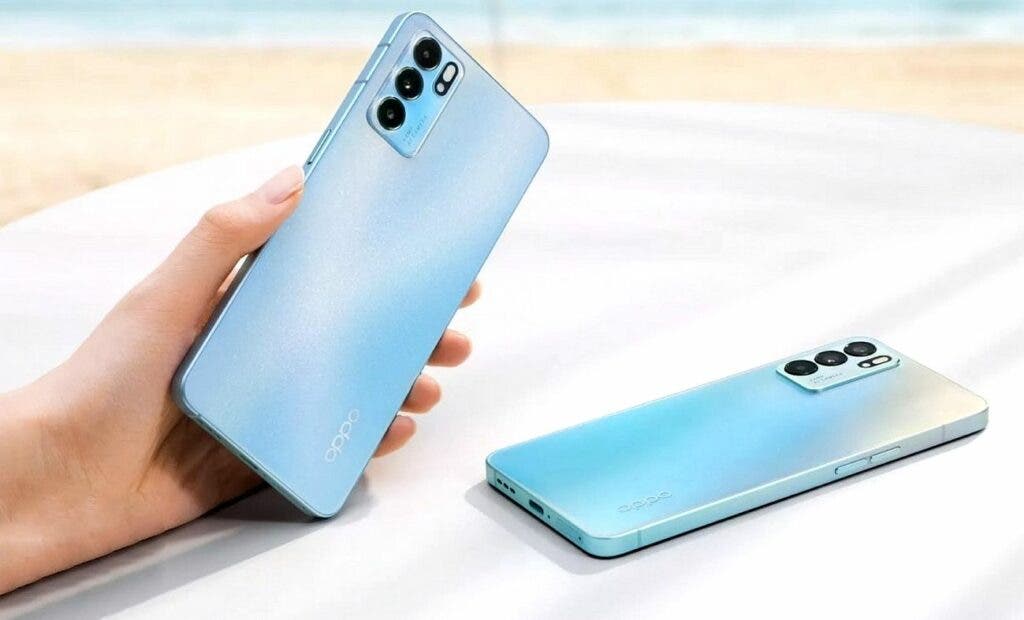
Just like its predecessor, the AI scene enhancement of the Reno6 ensures that users do not struggle with editing their selfies. In fact, you will have no need to edit the image except you want to add some special effects. It delivers the perfect image irrespective of the light level as it automatically detects the light levels. This makes the output image very vibrant and bright. Furthermore, we have the Night Flare Portrait mode feature that guarantees striking night portraits. The flare background lights deliver auto-refined night portraits with cool brightness and focus. Regarding this feature, Oppo said, “Don’t let the lighting limit you. Shoot clear and bright videos, even in dim or backlit settings”.
The front camera 1080p@30fps video at best but it supports the AI Highlight Video feature which kinda makes up for its lack of 4K videos. Furthermore, the Oppo Reno6 Pro also comes with a Monochrome Video mode. This mode comes with three filters including Crimson (read red), Forest Green (read green), and just Blue. The Reno6 Pro supports Dual-view Video mode that allows users to combine the front and rear cameras to capture what is happening on both sides simultaneously.
Oppo Reno6 Pro succinct spec preview
The Oppo Reno6 Pro comes with a 6.55 inch AMOLED display that supports a 90Hz refresh rate and resolution of 1080 x 2400 pixels. One of its selling points is its slim and light design, measuring 7.6mm in thickness with a weight of 177g. This smartphone comes with the Dimensity 1200 SoC (Mali-G77 GPU) and supports 8GB/12GB of RAM and 128GB/256GB of UFS 2.1 (global) / UFS 3.1 (China) storage. It uses a quad-rear camera setup. It has a 64MP main camera with 8MP (ultrawide), 2MP (macro), and 2MP (depth) sensors. To keep its lights on, this device uses a 4500 mAh battery that supports 65W fast charging and reverse charging. Other features include 5G wireless connectivity, Wi-Fi, Bluetooth 5.2, and ColorOS 11.3 (Android 11).
3. Poco X3 Pro
This is a very interesting newbie on this list because it is the cheapest smartphone on this list. It is one of two mid-rangers that makes our top 10 smartphones for selfies list. It is not very common to find a Xiaomi mid-range smartphone with a good front camera. However, the Poco X3 Pro front camera did just enough to deserve a place on this list. This smartphone comes with a 20MP Samsung S5K3T2 ISOCELL Plus 1/3.4″ Tetra-pixel sensor. Unfortunately, this device does not support a dynamic focus, it uses a fixed focus.
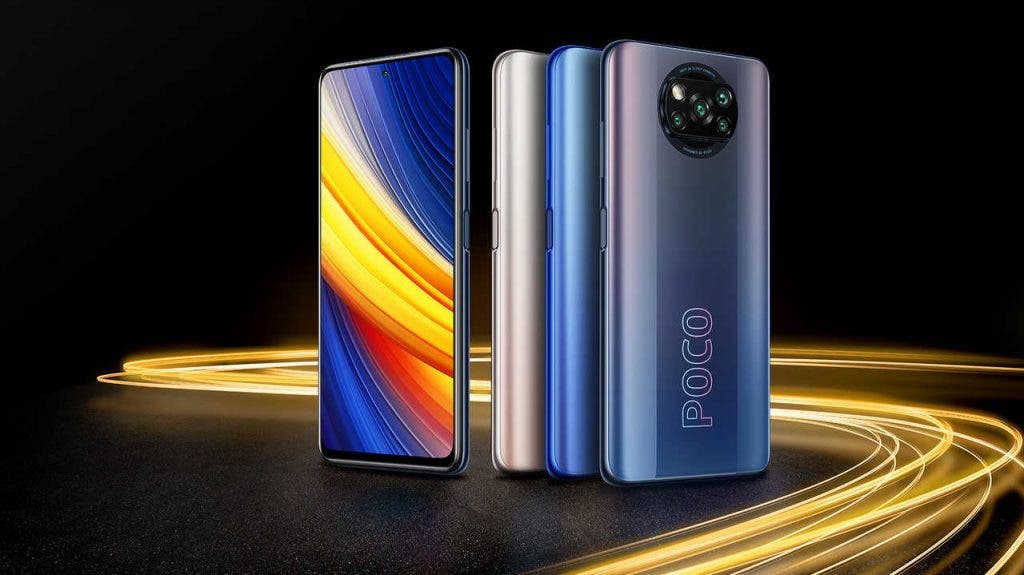
Looking at the performance of this camera, the details are good enough with cool colours. It easily passes as one of the best front cameras for mid-rangers. Furthermore, this device comes with high contrast and its closeup images are perfect. However, the range is short and this is a limitation and the portrait separation is not entirely the best. However, the background blur is quite good although occasionally, your ears may be blurred out.
Overall, the front camera is capable of pleasing selfie freaks, however, the processing seems to be “overdone” in some cases. The contrast may appear unnatural and the sharpening or skin retouching is too much in some cases.
Key front camera specifications:
- 20 MP 1/3.4″ Tetra-pixel sensor
- 26 mm-equivalent lens with f/2.2 aperture
- HDR, panorama
- 1080p@30fps
Poco X3 Pro succinct spec preview
This smartphone comes with a 6.67 inch IPS LCD display that supports 1080 x 2400 pixels resolution. This smartphone also comes with the Snapdragon 860 SoC and supports 6GB /128GB, 8GB/128GB, and 8GB/256GB of UFS 3.1 storage. It uses a quad-rear camera setup. It has a 48MP main camera with 8MP (ultrawide), 2MP (macro), and 2MP (depth) sensors. To keep its lights on, this device uses a huge 5160 mAh battery that supports 33W fast charging. Other features include 4G wireless connectivity, Wi-Fi, Bluetooth 5.0, and MIUI 12.5 for POCO (Android 11).
4. Google Pixel 5a
It is really hard to talk about smartphone photography and not have at least a Pixel smartphone on the list. The Google Pixel 5a was only recently released but its 8MP front camera is pretty decent. This device is not very much different from the Google Pixel 5 generally, both smartphones use the same selfie camera.
![]()
Key front camera specifications:
- 8MP 1/4.0″ sensor
- f/2.0-aperture lens with 24 mm-equivalent focal length
- Fixed focus
- Display-flash
- 1080p video at 30 fps
With only 8MP upfront, this smartphone has the smallest pixel size on this list. However, its software optimization is second to none. This smartphone is supposed to be Google’s flagship but the company had to cut some corners to reduce the cost. This of course affected the overall performance of the camera of this device. Overall, there is not much to complain about regarding the front camera of this device. The colour output, white balance, focus, and other features are quite decent. More importantly, is that this camera puts the noise under perfect control even in low-light environments.
Google Pixel 5a succinct spec preview
This smartphone comes with a 6.34-inch OLED screen that supports 1080 x 2400 pixels as well as a 90Hz refresh rate. This device offers 6GB of RAM and 128GB of internal storage. Furthermore, this device comes with a 4,680 mAh battery that supports an 18W fast charge but there is no wireless charging. Under the hood, this device uses a Snapdragon 765G 5G SoC, a mid-range with good performance.
5. Honor Magic3 Pro
The Honor Magic3 series is the first post-Huawei flagship from the Honor sub-brand. This series is an “all-round” flagship and it also comes with a decent front camera. This is why it has a spot on our smartphones for selfies list. Looking at the specs, this device comes with a 13MP front camera that has an aperture of f/2.4 and an ultrawide field of view. Furthermore, this smartphone also has a 3D ToF camera on the front and this makes facial recognition possible. Although this device lacks 4K video, it supports 1080p@30fps, a video capacity that most of the devices on this list uses.
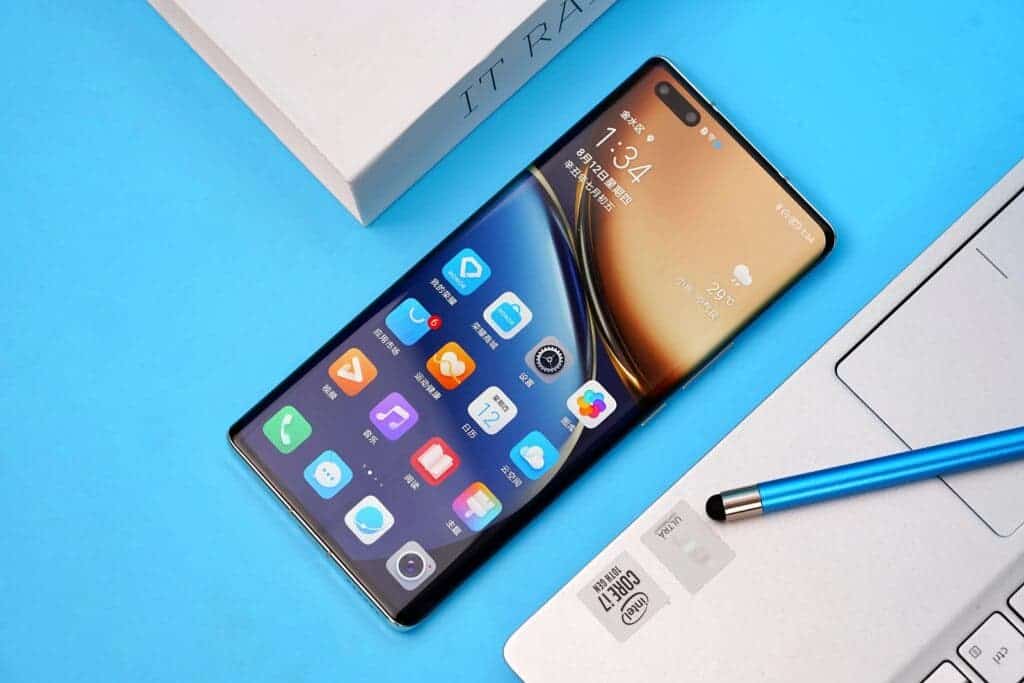
The Honor Magic 3 series is the first smartphone to pass the IMAX ENHANCED certification. It has cooperated with the Hollywood team to create professional-level video gameplay such as Magic-log and 3D LUT. This series also creates the first AI tone recommendation and enhanced movies with AI. It is important to note that many of these features are on the rear sensor not the selfie. However, the IMAX certification covers all.
Honor Magic3 Pro succinct preview
This device is powered by a Qualcomm Snapdragon 888 SoC with an active 5G connectivity. The Magic3 Pro has a 6.76-inch OLED display with a resolution of 1344 x 2772 pixels. This display panel also supports a 120Hz refresh rate. It has 8GB of RAM and 128GB/256GB of internal storage. Furthermore, this device comes with a 4,600 mAh battery that supports a 66W fast charge.
6. iQOO 8 Pro
The iQOO 8 series is another new smartphone that makes this list for our August column. This device was officially released a few days ago and its front camera is pretty decent. If you need a high-performing smartphone with a decent front camera, then you should consider this device. The iQOO 8 Pro comes with a 16MP selfie shooter with an f/2.4 aperture. For videos, this device only supports 1080p@30fps. While this video capacity is not the best, it appears to be the current standard for front cameras in the industry. Furthermore, this device support HDR which limits light from overexposure and preserves the details where there is no light. This creates a balance in terms of colour, texture, and details.
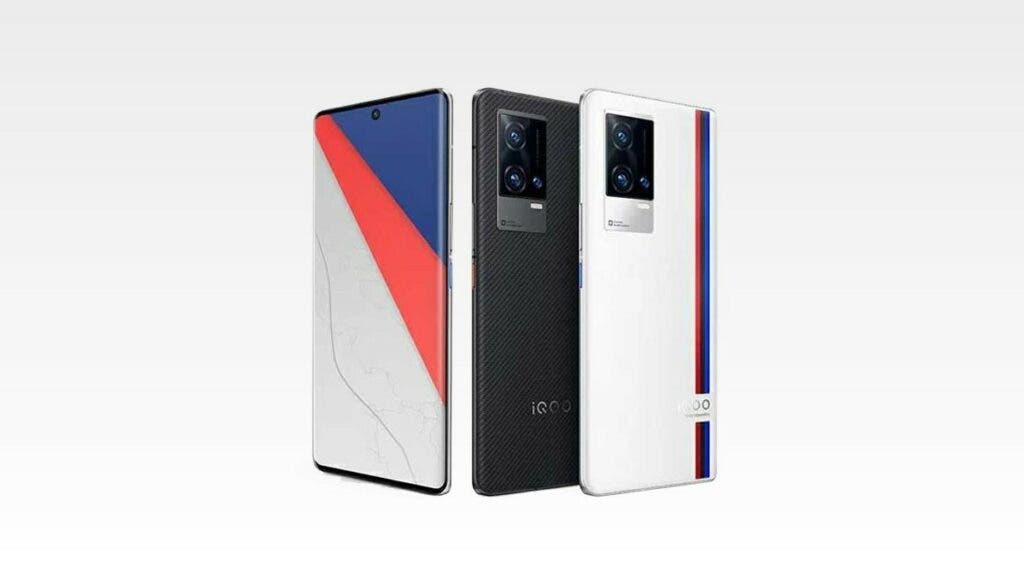
Key front camera specifications:
- 16 MP, f/2.4, (wide)
- HDR
- 1080p@30fps
iQOO 8 Pro succinct preview
The iQOO 8 Pro comes with a 6.78 inch LTPO AMOLED that supports 1440 x 3200 pixels resolution and a 120Hz refresh rate. Under the hood, this smartphone uses the Snapdragon 888+ 5nm chip. This device uses 8GB/12GB of RAM and 256GB/512GB of internal storage. On the rear, it has a triple camera setup which includes a 50MP main sensor, 16MP telephoto and 48MP ultrawide sensor. The battery size is only 4500 mAh and it supports 120W fast charging and 50W wireless charging and 10W reverse wireless charging.
7. Huawei Mate 40 Pro
There is a reason why the Huawei Mate 40 Pro was on top of DxOMark’s selfie camera rating for so many months with 104 points. This smartphone uses some of the best selfie camera optimizations in the industry. This device has been on our top 10 smartphones for selfies list for many months. Well, you wouldn’t argue with the fact that its selfie camera is pretty good.
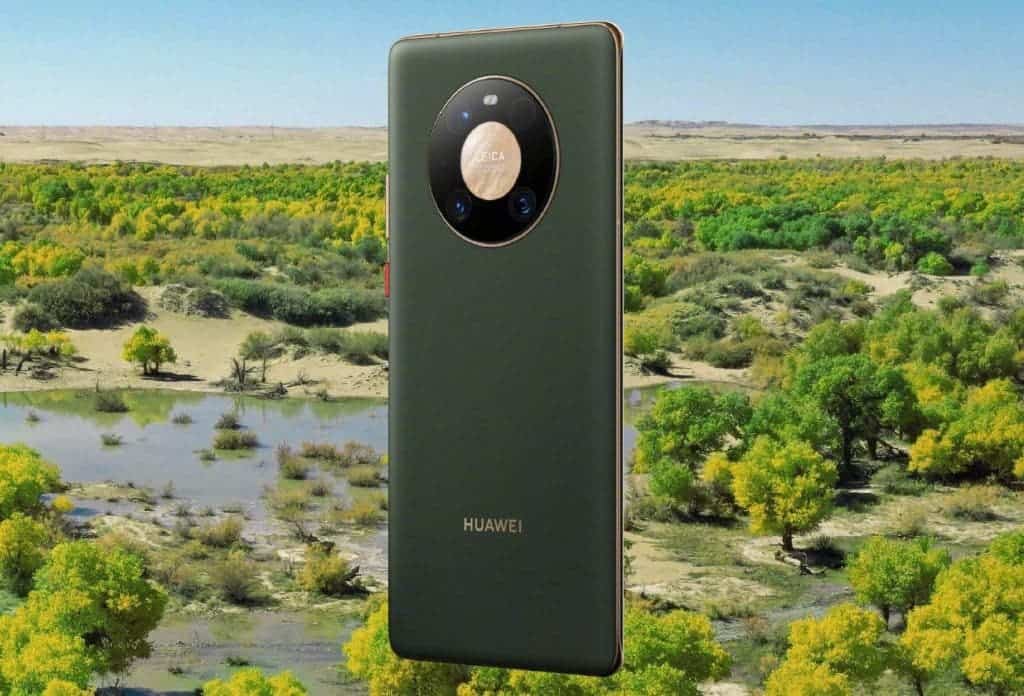
Key front camera specifications:
- Primary 13 MP 1/2.8″ sensor
- f/2.4 – aperture lens with 18 mm-equivalent focal length
- Time-of-flight camera for depth estimation
- Fixed focus
- Display-flash
- 4K video at 30fps
The Huawei P40 Pro comes with Face Beautification. With this feature, you just relax and let the phone do all the editing for you. One of the strengths of the Huawei P40 Pro is its noise reduction, good colour exposure, and excellent bokeh. With the dedicated IR sensor, the bokeh shots are nothing short of excellent. This sensor provides accurate depth estimation and masking around the subject during background blur. While the focus is great, it is probably the only aspect of this camera that the industry has better. Nevertheless, the focus capture faces perfectly at close range but appears to lose details as the distance gets longer (even using a selfie stick).
Whether you are dealing with indoor or outdoor shooting, the Huawei Mate 40 Pro+ is pretty impressive. The accurate autofocus and image stabilization make this camera even more attractive. Overall, there is very little or nothing to complain about with the Huawei Mate 40 Pro+
Huawei Mate 40 Pro succinct spec preview
Before you fall in love with any Huawei device presently, it’s important to know that it does not come with Google Mobile Services. This means that you can have access to Google Play Store. No Gmail, Google Map, YouTube, nothing. Thus, if you are living outside China, you may want to think about this before you consider this device. Although Huawei has HMS, which is supposed to be an alternative for GMS, it is not quite at GMS’s level and is still lacking some relevant apps. However, if GMS is not a problem, this smartphone has some interesting specs
The Huawei Mate 40 Pro comes with the 5nm Kirin 9000 SoC coupled with 8GB of RAM and 128GB/256GB/512GB of UFS 3.1 internal storage. Furthermore, this device uses a 6.76-inch display that supports 1344 x 2772 pixel resolution as well as a 90Hz refresh rate. Under the hood, there is a 4,200 mAh battery that supports a 66W fast charge, 50W wireless charging, and 5W reverse wireless charging. The battery department is one of the selling points of this smartphone. As of now, there are not many smartphones with 40W wireless charging capacity in the industry.
8. Huawei P40 Pro
If the Huawei P40 Pro is better than the Mate 40 Pro, it would be because of its double pixel size. The Huawei P40 Pro comes with a 32MP 1/2.74-inch sensor and a 26mm-equivalent lens with f/2.2 aperture. Furthermore, this smartphone comes with a dual-camera setup on the front. This is the latest trend in the smartphone market. The camera comes with a bokeh mode that uses a secondary infrared (IR) camera for depth sensing and also supports autofocus.
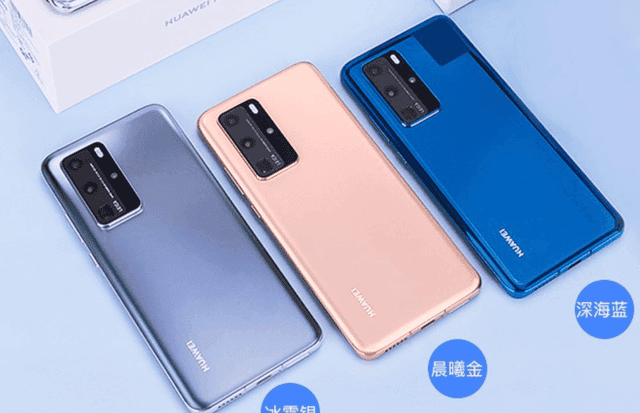
Key front camera specifications:
- Dual front camera
- 32MP 1/2.74-inch sensor with 0.8µm pixels
- 26mm-equivalent f/2.2-aperture autofocus lens
- IR 3D sensor for depth estimation and autofocus
- 4K 2160/30fps video
Before the arrival of the Huawei Mate 40 Pro, the P40 Pro was on top of the DxOMark front camera ranking for many months. This smartphone comes with top-notch focus with no instabilities. At close and medium-range, the capture of users’ faces is very sharp. At longer distances, the faces are sharp, however, there is some noise in the background. Despite the loss of background details from a longer range, the performance of this device’s front camera is still perfect.
The exposure, colour, flash, noise, and bokeh effect are the strong parts of this smartphone. The Huawei P40 Pro dedicated IR sensor ensures that its bokeh shots are very impressive. The depth estimation for this device is good and it perfectly eliminates all objects in the background with its blur.
In addition to the top performance of the front camera for images, the video performance is also excellent. According to users, the video and 4K capacity of this smartphone is excellent. It has top exposures, accurate autofocus, effective stabilization as well as pleasant colours. Even in low light conditions, the 4K front camera is not entirely the best but it’s top quality. If you need good front camera output in terms of images and videos, the Huawei P40 Pro is a smartphone to consider.
Huawei P40 Pro succinct spec preview
This smartphone comes with a 6.58 inch AMOLED display that supports a resolution of 1200 x 2640 pixels (~441 PPI density). Under the hood, we have a Qualcomm Snapdragon Kirin 990 5G (7 nm+) coupled with up to 8GB of RAM and 128GB/256GB/512GB of internal storage. On the rear, it uses a quad camera setup. It has a 50MP main camera, a 40MP (ultrawide), 12MP periscope telephoto, and a ToF 3D sensor. To keep its lights on, this device uses a 4200 mAh battery that supports 40W fast charging, 27W wireless fast charging, and 27W reverse fast reverse wireless charging. This device comes with EMUI 10.1 on top of Android 10 with no Google Play Services.
9. Samsung Galaxy S21 Ultra
Technically, the entire Samsung Galaxy S21 series should be on this list. However, we cant take all since they use similar features thus we are taking the best. However, Samsung’s software tricks galore, including a software-based “wide” selfie mode and the ability to choose between natural and beauty modes make this smartphone stand out.
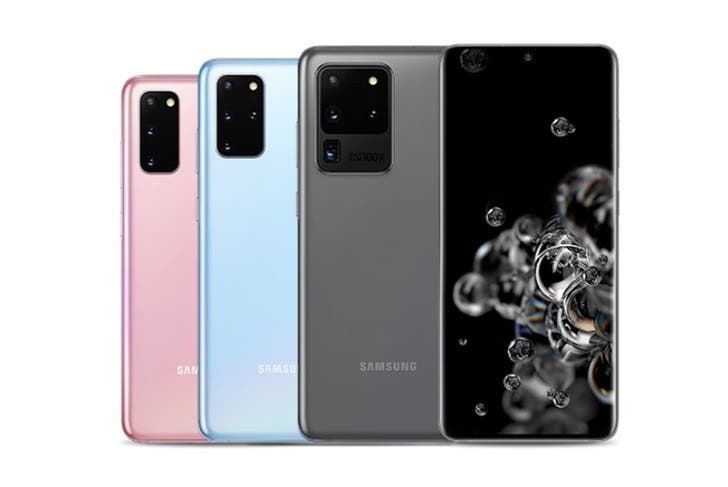
Key front camera specifications:
- Single front camera
- 40 MP, f/2.2, 26mm (wide), 1/2.8″, 0.7µm, PDAF
- Dual video call, Auto-HDR
- 4K@30/60fps, 1080p@30fps
Whatever feature you can think of such as portrait mode, night mode, stabilization, and others, this device got you covered. The video end is also great but Samsung added something to make it better. The South Korean manufacturer calls it the “Director’s View”.
On the video front, the Galaxy S21 Ultra can record 8K video up to 30 fps and all of its cameras can capture 4K video at up to 60 fps. But the coolest video upgrade is Director’s View. Interestingly, this is the same feature that Oppo and Vivo call Dual-View Mode. This mode allows users to use the Galaxy S21 Ultra to use the front and back cameras simultaneously for video recording. However, Samsung added a thumbnail to allow users to make a quick call while recording.
Samsung Galaxy S21 Ultra succinct spec preview
This device comes with a Qualcomm Snapdragon 888 SoC. It uses a 6.8-inch Dynamic AMOLED display that supports a 120Hz refresh rate and 1440 x 3200 pixel resolution. In addition, it has 12GB/16GB of RAM and 128GB/256GB/512GB of UFS 3.1 internal storage. On the rear, it has a quad-camera setup with a 108MP main sensor that supports 8K videos. Furthermore, this device comes with a 5,000 mAh battery that supports a 25W fast charge, 15W wireless charging, and 4.5W reverse wireless charging.
10. Samsung Galaxy S20 Ultra
The Samsung Galaxy S21 Ultra made our first edition list. However, this does not mean the previous generation Galaxy S20 Ultra is bad. In fact, Samsung padded the Galaxy S20 Ultra front camera such that it is not much different from the S21 Ultra. Samsung designed the front camera of this device such that it can capture both cropped and full-frame formats. By default, it captures images in its cropped format but this format has images with a lower resolution.
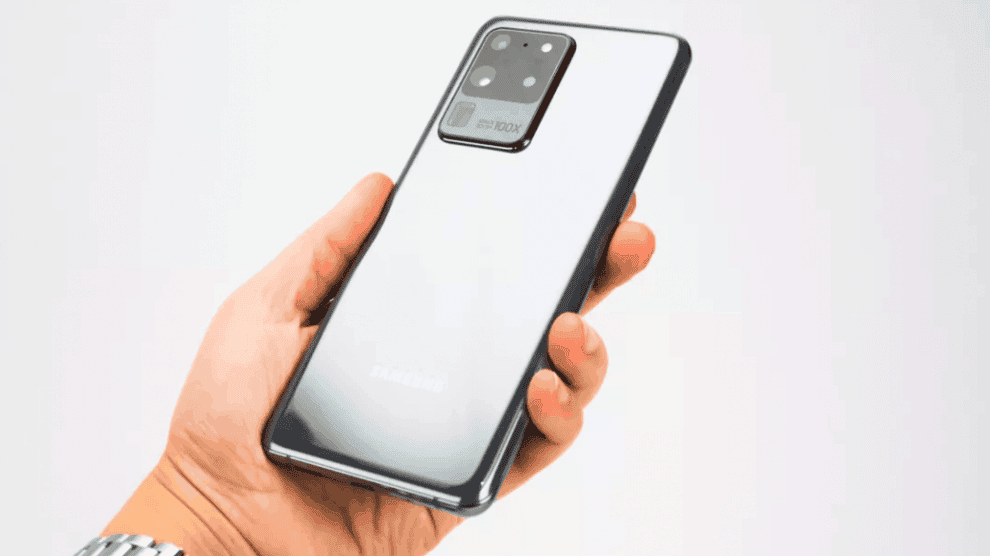
Key front camera specifications:
- 40MP 1/2.65-inch Quad-Bayer sensor with 0.7µm pixels
- 25mm-equivalent f/2.2-aperture lens (no OIS)
- Default cropped 6.5MP output at a 32mm-equivalent focal length
- Optional uncropped 10MP wide-angle output at a 25mm-equivalent focal length
- Automatic wide-angle switching for dual or group selfies
- AI-enabled by default
- PDAF autofocus
- 4K/60fps (1080p/30fps at default settings)
Whatever feature you can think of such as portrait mode, night mode, stabilization, and others, this device got you covered. The video end is also great but Samsung added something to make it better. The South Korean manufacturer calls it the “Director’s View”.
This smartphone does not have a dual front camera sensor like many devices on the list, however, it can capture images at a longer focal length. Its 40MP 1/2.65-inch Quad-Bayer sensor with 2×2 pixel binning outputs 10MP images with a 25mm-equivalent focal length in its wide-angle mode. This sensor selects automatically when there are two or more faces in the field of view.
Samsung Galaxy S20 Ultra succinct spec preview
This device comes with an Exynos 990 (7 nm+) SoC. It uses a 6.9-inch Dynamic AMOLED display that supports a 120Hz refresh rate and 1440 x 3200-pixel resolution. In addition, it has 12GB/16GB of RAM and 128GB/256GB/512GB of UFS 3.1 internal storage. On the rear, it has a quad-camera setup with a 108MP main sensor that supports 8K videos. Furthermore, this device comes with a 5,000 mAh battery that supports a 45W fast charge, 15W wireless charging, and 4.5W reverse wireless charging.
Conclusion
This is our top 10 smartphones for selfies for the month of August. This list is also our fourth edition of for the best smartphones for selfies. However, it is important to note that these devices are not listed in any particular order. Interestingly, this August edition has a whopping six new smartphones for selfies on the list.
No doubt, Huawei is currently the “King” of smartphones for selfies as its devices has been on the list for many months. The Huawei Mate 40 Pro and Huawei P40 Pro have been pretty constant. Now, the Huawei P50 Pro has joined them and with its performance, it is probably not leaving the top 10 smartphones for selfies list anytime soon.

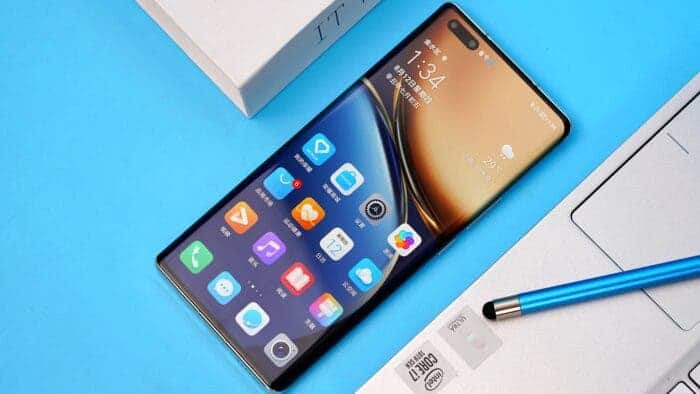



So where are mi 11 ultra and asus zenphone 8 flip also poco x3 pro shouldn't be in the list and is flagship killer not midrange EFE UDIN!